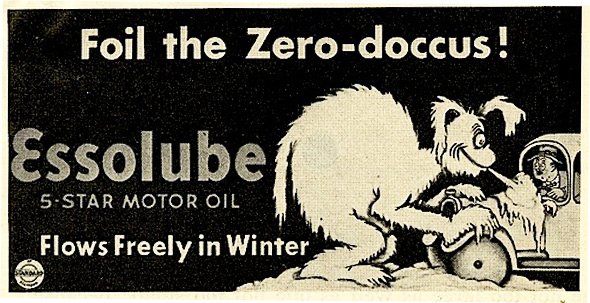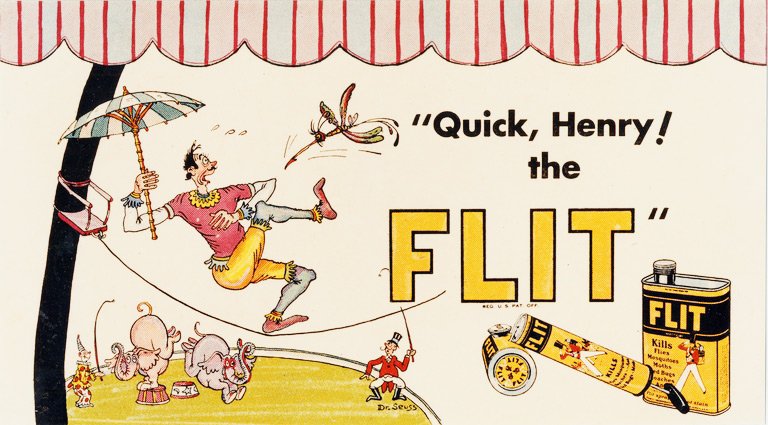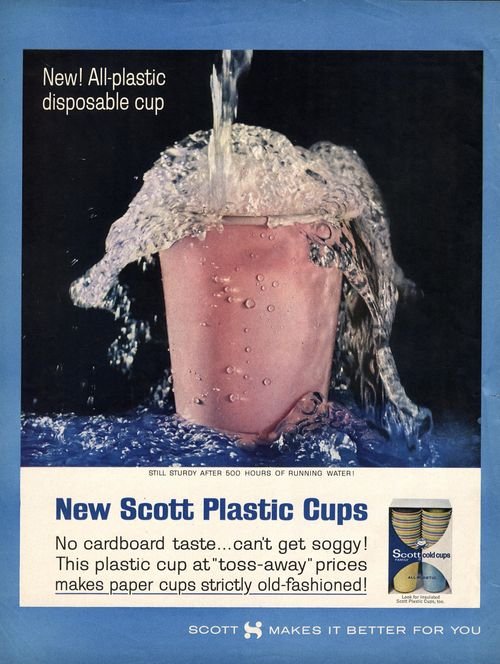26 Ads that Destroyed the Planet
Creating the Age of Consumerism
Until now, I never had a good answer for the party question - “If you were to go back in time and change one thing, what would it be?”
Mine would be to take down the advertising industry.
The 1950s were a turning point in advertising and innovation that led to nearly all of the waste we see today from pesticides to dixie cups and plastic storage containers.
The 1950s advertising era literally created and defined what we refer to as materialism and consumerism today. Some historians have called the 1960s the “Golden Age of Garbage.” Today most of that waste is still sitting around in landfills, given that most waste is not recycled.
Our enormously productive economy demands that we make consumption our way of life. We need things consumed, burned up, worn out, replaced and discarded at an ever-increasing pace. It requires that we convert buying and use of goods into rituals, that we seek our spiritual satisfactions, our ego satisfactions, in consumption. - Victor Lebow
And the thing is, ads work. A recent study by the Advertising Association finds that every dollar of ad spending drives up sales by $21. NYU Stern's Center for Sustainable Business found that products marked "sustainable" grew 5.6 times faster than those that weren't.
“individuals who prioritise materialistic values and goals do not only consume more but also act in less environmentally friendly ways.” Hartmann and colleagues note
The consumption of meat by an average American citizen, for example, has increased from 197 pounds in the 1960s to 275 pounds in 2008.
SheIn, the dark horse of fast fashion, generated $30 billion in 2022, a 91% increase from the year before.
We respond to ads, and surprisingly, ad companies do not have best interests in mind. Ads get us to recognize brands and hum jingles even if we are annoyed by pop-ups.
Oil Industry and Greenwashing
The oil industry started out using the very writers who could capture our hearts and minds. The beloved kids author “The Cat in the Hat,” Dr. Seuss (AKA Geisel) made a living as an ad man. For his biggest client, Standard Oil Company, he created elaborate advertising campaigns for Flit, a popular insecticide of the day, and for Essolube and Essomarine motor oil.
He drew people in with odd words and bright colors, meaning that most forgot they were buying toxins. Hundreds of such ad proofs from Geisel’s personal collection live at the University of California at San Diego’s Mandeville Special Collections Library, and can be easily viewed on their website.



Humble Oil (now ExxonMobil) was bold enough to say in its 1962 ad in Life Magazine
“Each day Humble supplies enough energy to melt 7 million tons of glacier!”
In 1991, Informed Citizens for the Environment, a group of coal and utility companies announced that “Doomsday is cancelled” referring to the impacts of fossil fuels on climate change and likened climate change scientists and advocates to Chicken Little.
Later the industry switched from mocking the scientists to blaming individuals for the lifestyle choices as BP launched a $100M marketing campaign in 2004 by asking American’s to take on the responsibility by “putting their best carbon footprint forward.”
The oil industry has continued this practice for decades. A 2022 study found that 60 percent of the advertisements produced by the five biggest oil companies contain “green claims”. A 2022 investigation by the House Oversight and Reform Committee also concluded that “fossil fuel companies have been misleading the public about their purported commitment to reduce emissions.”
The new buzz word is carbon capture and storage, which is basically repurposing old pipelines and oil wells to inject carbon dioxide into the ground. We’ve talked about the costs and benefits of this technology, and like all climate technologies, has its costs and benefits.
Exxon’s page on carbon capture shows someone literally sucking pollution from the air with a vacuum. Look familiar? The same use of effective messaging and bright colors to convince consumers Exxon is doing good and keeping our home, the earth, clean.
Source: Exxon
ExxonMobil saw a “limited” role for carbon capture and storage (CCS) projects in fighting climate change, but still promoted the technology in its advertising campaigns, internal company documents from 2018 showed.
Some may view carbon capture technology as a green washing strategy being used by the fossil fuel industry. More than 90 percent of the captured CO2 from carbon capture is used to extract oil.
Source: Exxon
But at least new green washing regulations in the U.S. and Canada are trying to put a halt to false claims. The outcomes of the regulations are yet to be seen, but already the industry is pulling ads to ensure they don’t violate these laws.
Already The Pathways Alliance, a group of Canada's biggest oil sands producers, has removed all content about environmental goals from its website and social media pages due to new green washing laws. ExxonMobil’s Canadian subsidiary, Imperial Oil, followed suit in removing a document from its website where CEO Brad Corson touted carbon capture and storage as essential for achieving the Paris Agreement’s climate goals. These groups are now fighting back against the new laws, claiming they make it easier for consumers to file a lawsuit.
Sources: Global Corporate Venturing
Chemical Industry and Greenwashing
In a 1923 brochure and children’s book from the Dutch Boy paints, they show a kid playing with a range of household items. But why would these kids play with paint, shoes, dishes, lights, and toy soldiers?
Well, because they all have lead in them obviously and we want kids to play with lead, right? The “Lead Family” of products was in everything from their nursery walls to their windup toys made young children particularly susceptible to its dangers.
Combined with lead paint’s seductively sweet flavor, putting kids in environments literally covered with the stuff was a recipe for disaster.
Sadly, as most know, consuming lead is common in kids and can lead to a range of long term health issues including brain damage, seizures, and heart problems. As a child I repainted my front porch which involved removing decades of paint, likely lead and inhaling the dust. The Consumer Product Safety Commission finally banned lead products in 1977, much too late. Sadly, we have known the health impacts of lead for a long time. The Romans were aware that lead could cause serious health problems, even madness and death.
If you think the lead ads were bad, it just gets worse with DDT. My family told me stories of how the DDT truck would drive through their community and everyone would chase behind them like the ice cream truck. This was a misguided attempt to cure polio when people thought it was caused by mosquitoes, but has also been used to kill mosquitoes carrying malaria.
But instead of ice cream, they got to inhale toxic chemicals. Sadly the operators encouraged this behavior. The ad above for “Penn Salt Chemicals” from 1947 shows a range of dangerous applications for now-illegal DDT, from agricultural sprays to household pesticides.
Humans and the environment paid a hefty costs and many more people were exposed to these dangerous chemical than necessary due to these cheery ads.
DDT impacts people with hazardous effects including damage to the nervous, immune, endocrine, and neurological systems. DDT also destroyed populations of bald eagles, osprey and other birds of prey.
The Plastic Industry and Greenwashing
If you think the fossil fuel and chemical industry was bold, the plastic industry took ads to another level. The benefits of using cellophane were promoted for everything from protecting women’s underwear to keeping bugs out to wrapping babies in cellophane! The industry promoted comfort and convenience. as a solution to our daily struggles.
This approach led to the massive packaging industry that we now see. An industry that has destroyed the environment with such issues as overflowing landfills, large floating patches of plastic waste in the ocean, and microplastics in our bodies (including male testicles), much of which cannot be recycled.
The plastics industry (part of the fossil fuel industry) gained momentum and started to create a range of disposable household items. Dr. Seuss returned again with his ads showing a community of bacteria protesting plastic Ajax cups. These bacteria wanted us to use glass cups of course since they are so dirty. This was before dishwashers, so clearly handwashing wasn’t doing it’s job in the minds of the plastic industry.
The advertising industry’s war on reusable glasses, dishes, and silverware funded by the likes of Dow Chemical, DuPont, Dixie Cup, and Scott Plastics continued on.
They hit us in our values with the invention of the magical plastic container.
Thanks to Dow, plastics became as “American as Apple Pie”
They hit us with our need for convenience, as people had to work harder and longer to make a living. Why not toss the cup instead of filling your sink with dishes, the ads asked. Gosh, and it will even save you work and let your kids serve themselves without worrying about broken glass on the floor.
The industry continued on, showing all of the benefits women would get and the relief they would get from housework while letting kids know it’s safe for them.
But dishes were not enough. We need to store leftovers too so let’s create colorfully designed plastic storage containers.
The industry took it further with a 1997 ad proclaiming that plastic saves our lives, and again focused on the benefit of plastics to the safety and happiness of our families.
Even in 2022, the plastics industry launched an ad lauding the benefits of plastics for a more viable future for our kids. The ad starts with a women feeding her baby from a plastic baby bottle, with the message that the industry is making the planet cleaner.
At the 2022 United Nations conference on a plastic free society, the plastic industry took the opportunity to bombard participants with ads showing how plastics reduce food waste and save lives.
Banning False Ads
Recently the Advertising Standards Authority (ASA) banned ads from major companies showing us that at least future generations may be protected from the damage that was done to us.
BMW had a Facebook advert banned in 2017 for its i3 electric car. The company claimed that the car was “zero emissions”, but this was disputed on the grounds that it came with the option of a small petrol engine to maintain its charge and also that it seemed to claim that by buying the car, customers would be “giving back” to the environment.
Fischer Future Heat sells electric immersion heaters, and claimed that its product was superior to traditional water cylinders, with one of the claims being that it was “zero emissions”. The as was ruled as misleading because it was powered by electricity, which is a source of carbon emissions, so couldn’t call itself “zero emissions”.
Ancol Pet Products claimed its poop bags were biodegradable. It claimed they lessened dogs’ impact on the environment, but researchers found that when buried in traditional landfill, they were no more beneficial than standard bags. The ASA ruled that this was misleading and banned the ad. The fact is that most poop bags are not compostable and many products that claim to be compostable, are not.
Shell described a Canadian tar sands project, involving the strip-mining of 140,000 sq km of Alberta, and the construction of the world’s largest oil refinery in Texas as “sustainable”.
Moving Forward with Better Ads
The majority of U.S. CEOs expect to see significant returns from their company’s sustainability investments within three to five years. Because of this, we know that the potential for greenwashing in the ad industry will continue, if not expand.
One solution is to think about internal restructuring in corporations. Keith Weed, former CMO of Unilever points out that sustainability should report to marketing, because it's marketing that creates demand and the company's future income.
Another strategy includes providing tools to detect false claims. The U.S. Federal Trade Commission has produced a new “green guide” that seeks to prevent companies from making deceptive environmental claims.
In the U.S., the Securities and Exchange Commission recently announced a rule requiring environmental, social, and governance funds to be 80% aligned with the fund’s stated goals. This may help hold these companies more accountable.

























